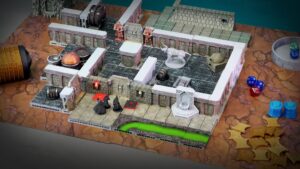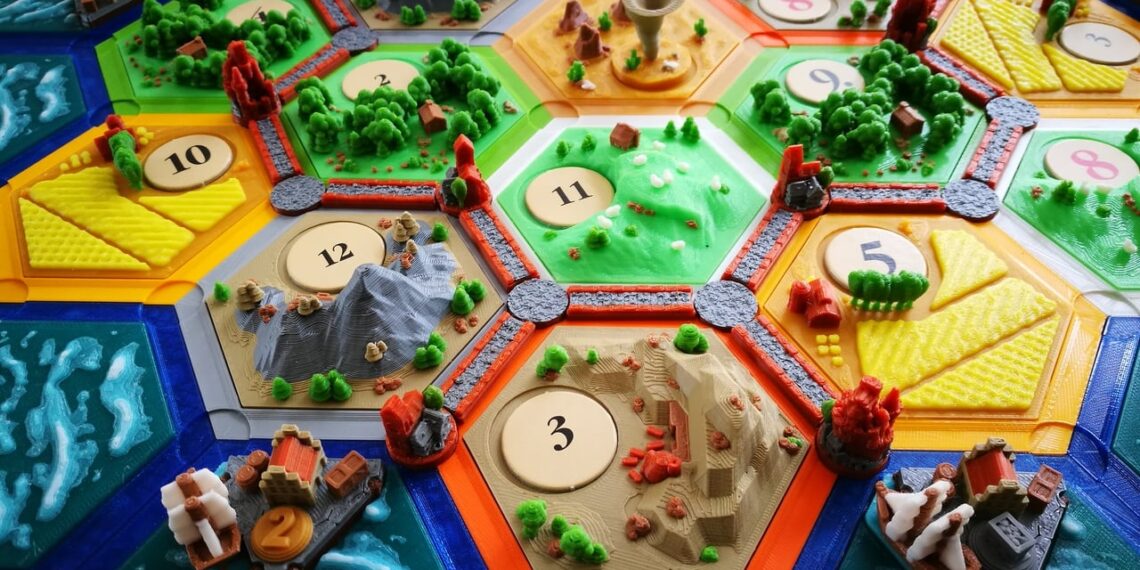3D printing has revolutionized the world of gaming, particularly in the realm of tabletop games. With the ability to create customized models and pieces, 3D printing has opened up new possibilities for game design and play. In this article, we will explore the use of 3D printing in gaming, specifically in the creation of custom models for tabletop games, including its advantages, challenges, and future trends.
Advantages of 3D Printing in Gaming
Customization
One of the key advantages of 3D printing in gaming is its ability to create customized models and pieces. With traditional game pieces, players are limited to the designs and materials provided by the game manufacturer. However, with 3D printing, players can create their own designs and customize the game pieces to their liking. This can lead to a more personalized and enjoyable gaming experience.

Design Flexibility
3D printing also allows for greater design flexibility in game design. With traditional manufacturing methods, certain design elements may be difficult or impossible to produce. However, with 3D printing, designers can create intricate and complex shapes and structures that would be difficult to achieve using traditional methods. This can lead to more innovative and efficient game designs.
Cost Savings
3D printing can also help to reduce costs in game design and production. With traditional manufacturing methods, creating custom game pieces can be expensive and time-consuming. However, with 3D printing, designers can create custom pieces quickly and efficiently, reducing production costs and time.
Improved Quality
3D printing can also lead to improved quality in game pieces. With traditional manufacturing methods, the quality of the game pieces may be affected by factors such as mold quality and material consistency. However, with 3D printing, designers can ensure consistent quality across all pieces, leading to a more enjoyable gaming experience.
Challenges and Considerations
While 3D printing offers many advantages in game design and production, there are also challenges and considerations to keep in mind. Here are some of the key challenges:
Intellectual Property: There may be concerns around intellectual property when creating custom game pieces using 3D printing. Some game manufacturers may have restrictions on the use of 3D printing to create custom pieces, or may have copyright concerns around the creation of replicas of their designs.
Quality Control: Ensuring consistent quality in 3D printed game pieces can be challenging, particularly for larger-scale production. The quality of the final product may be affected by factors such as printer calibration, material quality, and design errors. This can make it difficult to ensure consistent quality across different productions.
Material Limitations: The materials that can be used in 3D printing are currently limited compared to traditional manufacturing methods. This can make it difficult to achieve certain design elements or to produce game pieces with certain properties. In addition, the quality of the final product may be affected by the quality of the materials used.
Printing Time: Creating custom game pieces using 3D printing can be time-consuming, particularly for larger projects. This can make it difficult to meet production timelines and can lead to delays in the delivery of custom game pieces.
Future Trends in 3D Printing and Gaming
As 3D printing and gaming continue to evolve, there are several future trends that are emerging in the industry. Here are some of the key trends:
Integration with Virtual Reality
The integration of 3D printing with virtual reality is an emerging trend in gaming. By creating custom game pieces using 3D printing and combining them with virtual reality technology, game designers and players can create immersive and interactive gaming experiences.

Use of Sustainable Materials
The use of sustainable materials in 3D printing is an emerging trend in gaming. With game manufacturers becoming more environmentally conscious, there is growing interest in using sustainable materials in the creation of game pieces and other 3D printed materials.
Use of Scanners and Drones
The use of scanners and drones is also an emerging trend in gaming. By using scanners and drones, game designers and players can create accurate 3D models of real-world environments and structures, which can then be used to create custom game pieces using 3D printing technology.
Examples of 3D Printing in Gaming
Dungeons & Dragons
Dungeons & Dragons is a popular tabletop role-playing game that has been using 3D printing to create custom game pieces for years. Players can create their own custom characters using 3D printing technology, or can design custom terrain pieces and structures to enhance their gameplay.
Warhammer 40,000
Warhammer 40,000 is a popular tabletop wargame that has been using 3D printing to create custom models and terrain pieces for players. With 3D printing, players can create custom models of their armies and terrain pieces to enhance their gameplay.
Settlers of Catan
Settlers of Catan is a popular board game that has been using 3D printing to create custom pieces for players. With 3Dprinting, players can create custom resource pieces, player tokens, and even customized game boards to enhance their gameplay experience.
Gloom haven
Gloom haven is a popular tabletop game that has used 3D printing to create custom terrain pieces and character models. With 3D printing, players can create intricate and detailed models of their characters and the game world, enhancing the immersive experience of the game.
Conclusion
The use of 3D printing in gaming has transformed the way we approach game design and play. With its ability to create customized game pieces, enhance design flexibility, reduce costs, and improve quality, 3D printing offers many advantages in the field of gaming. While there are challenges and considerations to keep in mind, careful planning and consideration can help to ensure that 3D printing is used in an ethical and responsible manner. As technology continues to evolve, we can expect to see even more innovation and growth in the use of 3D printing in gaming, particularly in the realm of tabletop games.






